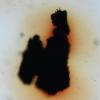
12-11-2025 09:25
 Viktorie Halasu
Viktorie Halasu
Hello, I need help with a pale terrestric Pseudom

11-11-2025 20:16
Bohan JiaHi, lastly I have found these tiny yellow decayin

09-11-2025 13:20
Hello.A tiny ascomycete, appearing as erupting gra

08-11-2025 00:29
 Francois Guay
Francois Guay
I found this species in Quebec, Canada, on herbace
Unknown fungus on Quercus stick.
Guy Buddy,
02-05-2019 15:07
Jacques Fournier,
03-05-2019 15:08

Re : Unknown fungus on Quercus stick.
Hi,
asci and ascospores remind me of Lopadostoma, though the apical ring should be amyloid. But in this genus it is small and easily overlooked.
I wonder if the black pustules are single ascomata or represent several ascomata surrounded by a stroma. A close-up on a horizontal or better a vertical section would answer this question.
Are you related to Buddy Guy?
Cheers,
Jacques
asci and ascospores remind me of Lopadostoma, though the apical ring should be amyloid. But in this genus it is small and easily overlooked.
I wonder if the black pustules are single ascomata or represent several ascomata surrounded by a stroma. A close-up on a horizontal or better a vertical section would answer this question.
Are you related to Buddy Guy?
Cheers,
Jacques
Guy Buddy,
03-05-2019 16:14
Re : Unknown fungus on Quercus stick.
Thanks Jacques. Unfortunately this sample got ignored and I did not spend a lot of time on it. I added a photo of the asci in melzers. I dont see any reaction. Picture three is the ascoma cut open, it appears to be one large perithecia, not loculated. The spores do look good for Lopadostoma, but i dont see any species that are not loculated. Maybe Barrmaelia?
Guy Buddy,
03-05-2019 17:56
Jacques Fournier,
03-05-2019 18:26

Re : Unknown fungus on Quercus stick.
this is much helpful.
There is a layer of some orange brown tissue around the perithecium. If a chip of stroma added to a drop of 5*10 % KOH releases an orange pigment, we are likely dealing with Creosphaeria sassafras, a Xylariaceae which is not uncommon in North America.
Jacques

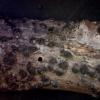
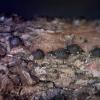
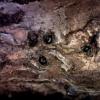
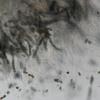
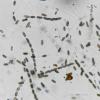
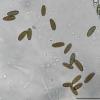
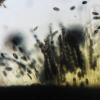
 B555-20190503-113401-0001.bmp
B555-20190503-113401-0001.bmp